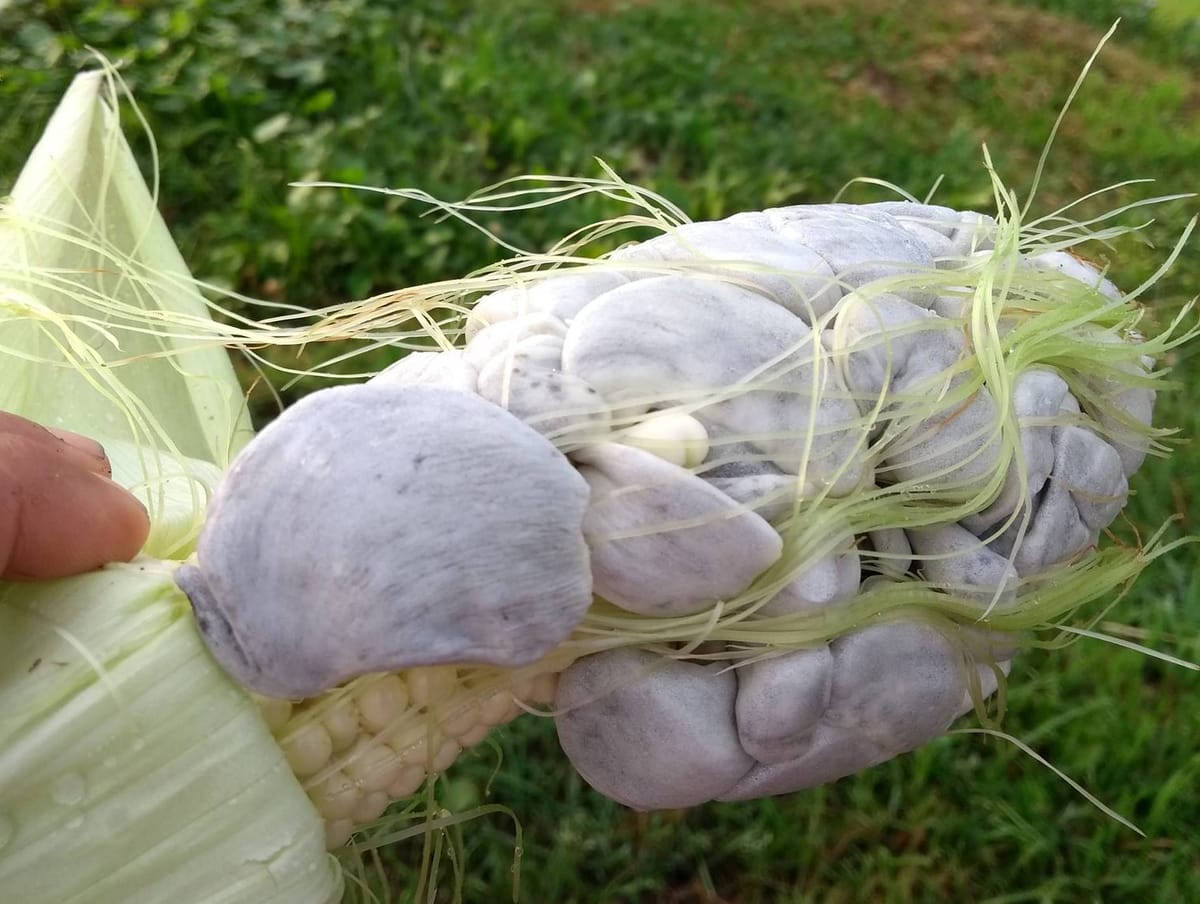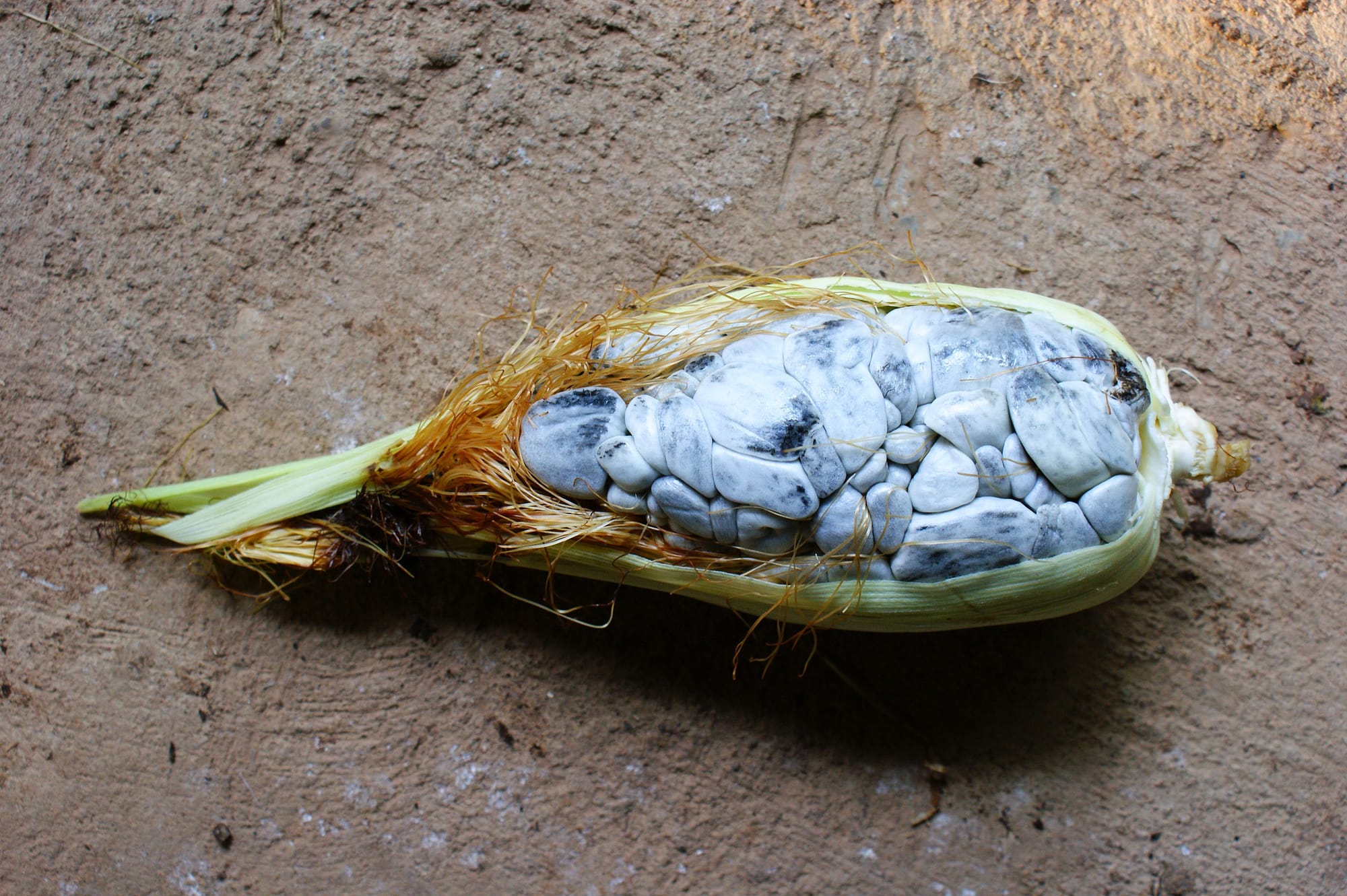Why is Huitlacoche, the Mexican Corn Fungus, So Expensive?
Huitlacoche, revered by Aztecs and once deemed "corn smut" in the U.S., has transformed into a luxury food. Its scarcity and unique flavor have shifted its status from agricultural blight to a sought-after gourmet delicacy, gaining global culinary recognition.

Originally discovered by the Aztecs, Huitlacoche, also known as the "Mexican truffle," has been a staple in Mexican cuisine for centuries and is now gaining worldwide recognition.
This Mexican corn fungus, celebrated for its unique flavor, can command prices as high as $40 per pound.
Contrarily, in the U.S., extensive efforts are made to eradicate this "corn smut."
During the rainy season, huitlacoche develops naturally, but some farmers deliberately cultivate it, valuing it as a lucrative "black gold."
Its rising popularity and the intricate process of cultivation contribute to its high cost.
What is Huitlacoche?
Huitlacoche, often dubbed the "Mexican truffle," is a unique fungus, Ustilago maydis, that infects maize, transforming the kernels into huitlacoche galls.
This phenomenon occurs naturally, often due to disturbances like deer nibbling on the cobs. Celebrated in Mexican cuisine for its earthy, mushroom-like flavor, huitlacoche is a gourmet delicacy.
Both cultivated and naturally occurring, it is harvested for its distinct taste and texture, elevating it to a prized ingredient in a variety of upscale dishes.
History and Origin of "Mexican Truffle"
Huitlacoche has its roots in the Nahuatl language of the Aztecs in Central Mexico.
Valued for its comprehensive nutritional profile, particularly its richness in essential amino acids, this fungus was traditionally grown by smearing a black, inky substance from the fungus onto corn stalks.
This led to a fascinating transformation of the corn kernels, which would swell, change color from grey to black, and become soft and powdery, indicating the fungus's full development.
In contrast, U.S. farmers initially saw huitlacoche as an undesirable blight, dubbing it “corn smut” or “devil’s corn,” and efforts were made to eradicate it.
However, recent developments have shown a complete turnaround in this perception.
Recognizing its unique smoky flavor and high nutritional value, American agriculture is now exploring its cultivation, especially after a 2016 University of Texas–Rio Grande Valley study by Alexis Racelis, which suggested significant economic prospects for the crop.
Not only is huitlacoche now seen as a potential cash crop in the U.S., but its health benefits, including high levels of protein, fiber, and the essential amino acid lysine, have been acknowledged.
These benefits were well-known to the indigenous people of Mexico and Central America, where huitlacoche has been consumed for millennia.

Characteristics and Flavor Profile
Huitlacoche displays a distinctive shape, often bulbous or tumorous. Initially, its color ranges from white to silver, progressively darkening to blue hues and ultimately turning into a glistening ebony as it ripens.
Its aroma is subtly earthy, similar to fresh mushrooms, and upon cooking, it releases a sour, woodsy flavor reminiscent of truffles.
Huitlacoche is typically not eaten raw. A texture that is too soft or mushy, accompanied by a strong odor, usually indicates that it has been either bruised or harvested too long ago.
Why is Huitlacoche so Expensive?
Huitlacoche's expense can primarily be attributed to the following factors:
Scarcity and Seasonality
Huitlacoche is not easily found. Its availability is largely dependent on the rainy season, typically from July to September, akin to wild mushrooms flourishing after rain. This limited seasonal window adds to its rarity.
Harvesting Challenges
Locating huitlacoche requires identifying disturbances in corn growth, such as edges of fields frequented by deer, areas affected by hail or inclement weather, or flood-prone fields. The perfect harvesting time is brief; too early, and the kernels are bitter; too late, and they turn mushy. Ideal kernels are plump and firm, sometimes with a bit of black indicating ripeness.
Handling and Preservation
Once harvested, huitlacoche is delicate and must be processed or chilled within 2-3 days. Heavy rain can ruin it, turning the kernels mushy and leaking a black liquid. Furthermore, insects often infest the cobs, requiring careful inspection.
Culinary Value
Its unique smoky, nutty flavor, and rich nutritional content make it a sought-after ingredient, especially in gourmet cuisine. However, its taste can change upon freezing, making fresh, well-preserved huitlacoche even more valuable.
Cultural Practices
There are diverse harvesting preferences, with some indigenous cultures using even the older, slimier or purely black huitlacoche. The transformation of the kernels into powdery black spores is a natural process, not decomposition, which is essential for spreading spores.
Culinary Uses
Huitlacoche, with its unique earthy and slightly smoky flavor, is a versatile ingredient in Mexican cuisine and beyond. Here are some more detailed culinary uses:
- Tacos and Quesadillas: One of the most popular uses of huitlacoche is in tacos and quesadillas. The fungus is sautéed with onions, garlic, and spices, then used as a filling, often combined with cheese, which complements its rich flavor.
- Soups and Sauces: Huitlacoche adds a depth of flavor to soups and sauces. It can be blended into a creamy soup or added to broths for an umami boost. In sauces, it pairs well with ingredients like tomatoes and chili peppers, enhancing traditional Mexican mole sauces.
- Omelettes and Scrambled Eggs: For a twist on breakfast dishes, huitlacoche can be added to omelettes or scrambled eggs. Its flavor pairs well with eggs, and it can be combined with cheese, herbs, and vegetables for a hearty meal.
- Tamales: In tamales, huitlacoche can either be mixed into the masa (corn dough) for flavor or used as a filling. It's often combined with other ingredients like cheese, peppers, or meats.
- Side Dishes: Simply sautéed with garlic, onions, and fresh herbs like cilantro or epazote, huitlacoche makes a flavorful side dish. It can complement a variety of main courses, particularly grilled meats or vegetables.
- Pasta and Risotto: In contemporary fusion cuisine, chefs use huitlacoche in pasta sauces or as an ingredient in risotto, blending Mexican flavors with Italian cooking techniques.
- Stuffed Vegetables: Huitlacoche can be used as a stuffing for vegetables like bell peppers or zucchini, often mixed with cheese and herbs.
- Pizza Topping: For a unique pizza topping, huitlacoche offers a flavorful alternative to traditional mushrooms.
- Salads: Chopped huitlacoche can be added to salads, especially those with a base of grains like quinoa or farro, for an earthy flavor note.
Nutritional Value
Huitlacoche is a nutritionally dense food, notable for its high protein content, unsaturated fats, and essential amino acid lysine, which is beneficial for immune system and bone health.
Its rich fiber content, along with valuable minerals like iron, phosphorus, and calcium, and vitamins such as niacin and riboflavin, make it an excellent meat substitute and a nutritious component in plant-based diets.
This unique combination of nutrients positions huitlacoche as a rare and healthy culinary choice.
Final Thoughts
Recognizing huitlacoche for its culinary value, rather than dismissing it as an agricultural problem or treating it as an exotic novelty, can help shift perceptions of Mexican cuisine in America.
This approach could also facilitate the inclusion of more Indigenous ingredients in mainstream diets, highlighting the rich diversity and potential of these underexplored foods.
The value and cost of huitlacoche arise from its seasonal availability, complex harvest methods, quick processing needs, its desirable flavor, and the variety in traditional harvesting techniques.
Embracing huitlacoche and similar ingredients not only expands our culinary horizons but also respects and preserves Indigenous cultural heritage.


